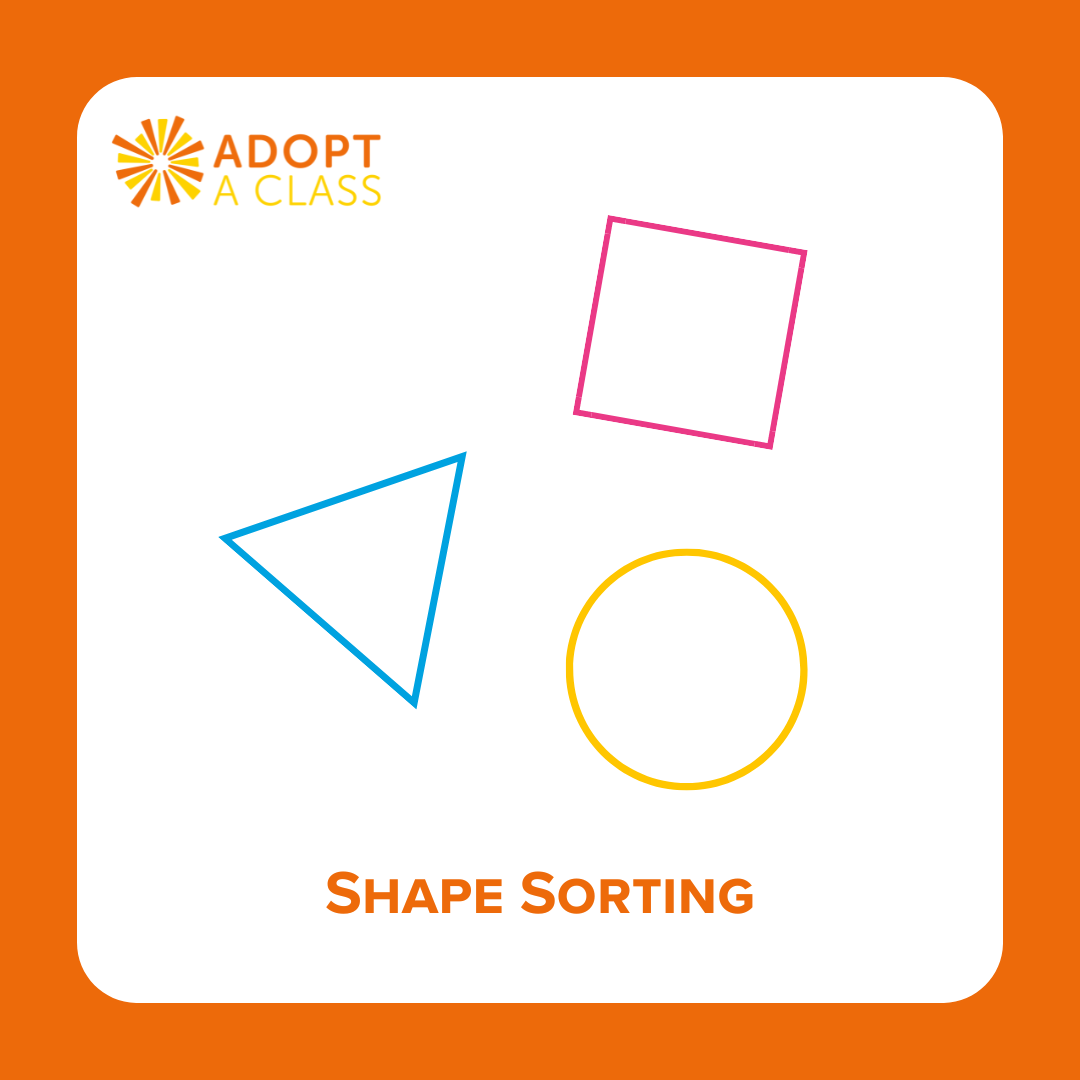Materials: 8 sets of Shape Sorting (1 copy of each shape per group), & Round is a Tortilla – Book *Optional* An assortment of small objects from your place of business that can be sorted.
Instructions:
1. Start today’s activity by reviewing basic shapes with students (circle, square, triangle, rectangle, oval). You can either display one of each shape sheet on the board/projector, or you can draw them on a board if available.
2. Share with the students that you will be reading the book Round is a Tortilla together today. There are questions throughout the book that ask students about shaped things they know/see/eat–you can choose to take answers at that page from a few students or instruct students to wait until the activity after the book.
3. Read the book Round is a Tortilla aloud to students.
***NOTE: If teacher allows, you can move the students to a “group” setting (carpet, reading space).***
4. After finishing the book, break students up into small groups (4-5 students per group), preferably at tables or desks. Mentors should join students in these small groups (at least one mentor per group). Each group will need 1 set of the Shape Sorting sheets (each set contains 1 sheet for each shape) and a pen/pencil/something to write with.
5.Lay each shape’s sheet out on the desk/table. Tell students that they will become “shape detectives” today. Their job will be to look around the room and identify objects that match the shapes on the table. Set a few ground rules before they start: they should not shout their answers to the mentor, only 1 student can walk around the room at a time, students should raise their hand for mentors to call on to share the object they have found. [Students walking around the room with permission from the mentor should NOT bring objects back to the table, but instead just tell the mentor the name of what they found.]
***NOTE: If the teacher does not approve the students walking around the room simply skip that option and have students look around the room from their seats.***
6. As students share what they find/see/identify, mentors should write the names of those items in each category (have students tell you which shape category you should be writing in).
***NOTE: Optional to let students write the names of shapes while assisting with spelling as necessary.***
7. Continue with the activity for as long as time allows. As students finish up, you can ask follow-up questions (good for if a group seems to be finished while others are not).
- – Do you see any similarities (how things are the same) between any of your objects?
- – Can an object be 2 shapes? Find something that has 2 shapes.
- – Can you tell me the other names or words you use at home for some of these items? (opportunity for students who speak additional languages to share words in their known languages).
- – Can think of objects at home or other places that would also fit in each cateogory?
Tips: We recommend reading this book ahead of time to be familiar with how to say the words (there is a glossary in the back of the book). You can also bring items from your place of work/office that students can inspect and sort.


